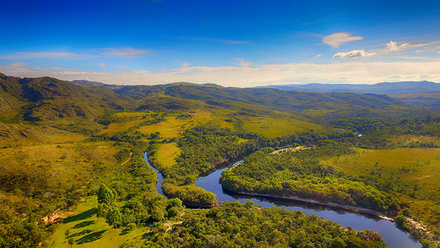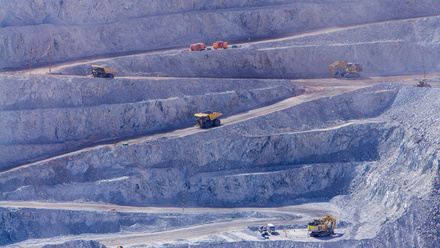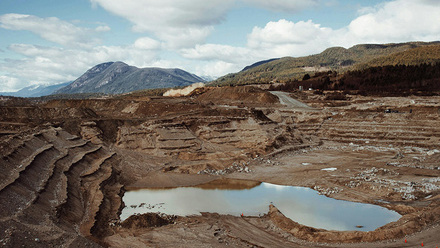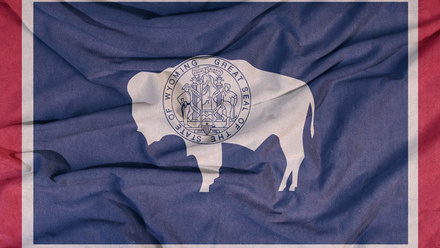Underground in Atlantic Canada
Newfoundland and Labrador hosts Canada’s largest gold and underground mines, Michael Schwartz profiles the vast province holding major mineral wealth.
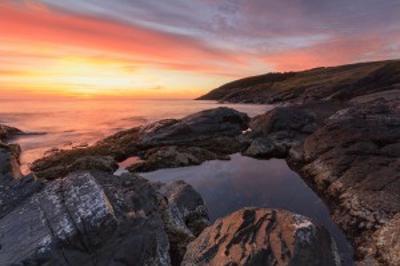
Mining in Newfoundland and Labrador is traditionally measured by the gross value of mineral shipments (GVMS). Currently, mining companies are asked for the value of the various commodities they plan to ship in any given year. The outputs are divided into iron ore – by far the largest commodity, nickel – a very distant second, copper, and two very small categories, namely any other metals and non-metals.
Most recently, the forecast for 2019 was CAN$4.3bln. In the past decade, only 2011 saw a higher figure, at around CAN$4.5bln. For 2019, iron ore saw a large leap in value for the Iron Ore Company of Canada, the financial consequence of the tragic Brazilian tailings failure.
Employment is another benefit of mining in the province. Last year’s figure from the Department of Natural Resources was forecast to top 6,370 person-years, up 17% on 2018. In recent years, increased direct employment in mining operations has compensated for lower construction numbers.
The province of Newfoundland and Labrador is very sympathetic to mining. Robbert Borst, Chief Operations Officer at Marathon Gold Corporation, notes, ‘The government of the province is certainly very helpful, as it has a strong self-interest for economic reasons.’
Golden opportunity
Central Newfoundland hosts the 20km of gold-bearing quartz-tourmaline-pyrite (QTP) veins that make up the Valentine Gold Project. Wholly owned by Marathon Gold Corporation, the project offers four gold deposits to date, which the company aims to bring to production.
Valentine is supported by year-round road access and proximity to the local electricity grid. Two years ago, a preliminary economic assessment (PEA) revealed that the project could support open-pit mining and conventional milling over 12 years. The recently updated mineral resource estimate comprises measured mineral resources of 1.90Moz (31.69Mt at 1.86g/t gold), indicated resources of 1.19Moz (23.17Mt at 1.60g/t gold) and inferred resources of 0.96Moz (16.77Mt at 1.78g/t gold). Concurrently with the resource estimate, a pre-feasibility study and an environmental assessment are underway, supported by a treasury that at the end of September 2019 held US$23.6mln.
2020 is witnessing an exploration drill programme, as approval has now been given for a total of 44,000m of exploration drilling at Valentine at a cost of US$6.12mln. Of particular priority is the project’s Sprite Corridor, where drilling just a few months ago showed very encouraging gold intersections. This year’s drill programme will incorporate up to 32,000m in this corridor, spread over three sub-areas.
One such sub-area itself draws on confirmation of a new sequence of stacked, shallow-dipping QTP-gold veining. Previous drilling reported last December yielded one hole with many intersections - 1.63 g/t gold over 16.0m, 2.04g/t gold over 9.0m, 4.33g/t gold over 9.0m, 7.53g/t gold over 5.0 m, and 2.3 g/t gold over 15.0m. A further hole revealed 6.17g/t gold over 49m, reported Marathon Gold on June 25 2018.
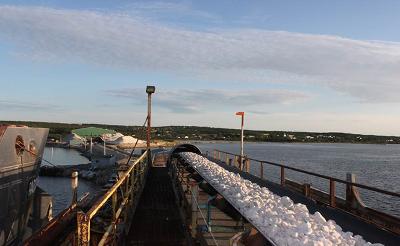
The drilling has confirmed a new Main Zone type sequence of stacked, en-echelon QTP veining with significant gold grades in an area named the Berry Zone. As at the nearby Marathon and Leprechaun Deposits, this new zone is located proximal to the Valentine Lake Shear Zone and extends 250m down, with an apparent thickness of up to 50m. One hole, representing a 300m step-out to the northeast, returned 7.60g/t gold over 22m. The company expects that the Sprite Corridor, and this new Berry Zone in particular, will be a priority for additional follow-up drilling.
Regarding gold produced in the mill, Marathon Gold quotes from the 2018 PEA. Overall, the estimated grade of material trucked to the mill is 2.2g/t, with an average cut-off grade of 0.7g/t.
Dual taxation
On taxes and royalties in Newfoundland and Labrador, Borst acknowledged that the rates are a little higher than in other parts of Canada, pointing out that there are two taxes affecting mining operations. There is the Provincial Mining Tax, where mine operators are subject to 15% tax on their net income, that is gross revenue minus allowed expenses (such as operating and processing, depreciation, pre-production, exploration, crown royalties, processing and smelting allowances).
This Provincial Mining Tax is then deducted when calculating federal and provincial corporate taxes of approximately 30%, half of which goes to the provincial government. Marathon Gold’s corporate social responsibility (CSR) commitment puts great emphasis on working with local communities and Newfoundland island’s First Nations. The company is engaged in direct communication with six central Newfoundland communities, and two indigenous groups.
The indigenous groups are the Miawpukek First Nation, located in the community of Conne River, and the Qalipu Mi’kmaq First Nation, whose membership is drawn more broadly from across the island. Marathon Gold, says Borst, ‘is interested in involving the communities and First Nations groups in the development of the project to the best extent possible, in particular in terms of sourcing local skilled employees and mining services. Relations are very cordial.’
Further to the question of staff recruitment in what is sometimes considered a remote part of Canada, Borst says that finding employees is, ‘one of the advantages of being in Newfoundland and Labrador. There are a lot of highly skilled local people in the province, who are currently working elsewhere within the Canadian resource sector because of a lack of local economic opportunity. For example, many have worked in the Alberta oil sands and all over Canada and the world. We are receiving many resumes already, and there is obviously a keen interest in returning to a local project’.
For the future, the gold will go to a Canadian refinery. Once treated it will be sold on the open market. Borst explains, ‘Once we get the gold to the refinery, that is it for our involvement.’
In addition, the Valentine Gold Project is, ‘definitely the largest undeveloped gold project in Atlantic Canada, and once in production it will be considerably larger than other gold operations in the region’.
Vulcan Minerals operations
Vulcan Minerals wholly owns Newfoundland and Labrador’s Colchester gold-copper project, located in north-central Newfoundland. It is regarded as a high-potential volcanogenic massive sulphide system comprising 130 claims over 32.5km and the project benefits from several local advantages, notably, being transected by a paved road just 25km from the Trans-Canada Highway. Equally important are nearby communities with substantial expertise in exploration services and with a pro-development mindset, from being experienced in previous mine development.
Four years ago, Vulcan Minerals conducted an exploration programme featuring high-resolution bedrock mapping that confirmed historical work, a four-hole, 825m diamond drilling programme and successful intersection of copper sulphides and gold mineralisation.
Vulcan also owns the Captain Cook salt deposit situated at St George’s in western Newfoundland. It has the attributes of scale, mineral purity and accessible infrastructure to warrant its development as a source of road de-icing salt. The project is being advanced through its subsidiary, Red Moon Resources Inc. Both companies are based in the province and are publicly traded on the TSX-V Venture Stock Exchange.
The salt deposit lies 350m underground and approximately 5km from a deep-water port which is currently being used by Vulcan/Red Moon to export gypsum from its nearby Ace Mine. A regulatorily compliant, independent geologic resource assessment of the salt deposit indicates a resource exceeding 900Mt of high-grade salt whose purity exceeds road de-icing specifications. A mine with an annual production of 2Mt/y is envisioned. The project is currently seeking an investment of CAN$3,000,000 to complete a full-scale feasibility study.
Patrick Laracy, President and Director at Vulcan, believes the remoteness of Newfoundland and Labrador ‘has not impacted operations generally, except it can be difficult to attract technical exploration development professionals to this office location, but this problem is pretty universal in the industry’.
Where he did express concern was in the area of royalties. While taxation in general is, ‘in the middle of the road for Canadian standards and as such is not seen as a deterrent to activity’, there is a royalty tax, ‘which is uncommon and puts our early-stage prospectors and project-generating exploration companies at a disadvantage’.
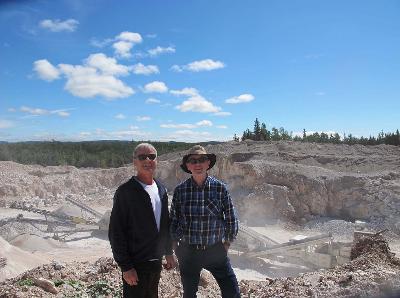
Vulcan Minerals is keen to emphasise the importance of CSR. Laracy explains, ‘CSR is certainly part of our consciousness as all projects really require “social licence” to proceed effectively. We undertake ongoing communications with local communities and leaders to ensure they are aware of what is happening before it happens. We have responded to concerns about our open-pit gypsum mining operation regarding blasting (notice) and trucking (routing). We also try to ensure that local persons are given preference for employment opportunities.’
The company has worked with the local colleges and university by sponsoring thesis projects and using laboratory assets for chemical analysis and processing gypsum tailings at bench scale. Physical transportation of personnel to and from work sites is currently not a problem as local workers are used for exploration and mining operations. Movement of mining products to markets outside the province, however, requires significant coordination – scheduling and costs can also be an issue as to unpredictability.
Voisey’s Bay expansion
Outside Newfoundland, the mineral wealth of Labrador is immense. An example is Vale’s development of the underground nickel deposits at Voisey’s Bay on the north coast of Labrador, first sanctioned in July 2015. Existing open-pit operations will continue next year but developing underground operations will extend the site until 2032 at least. The intention is to create about 650 construction jobs as well as 400 full-time operations positions and construction is currently underway.
Peak production envisages 40,000t/y of nickel-in-concentrate to be shipped to Vale’s Long Harbour. This will be centred on two key deposits, Reid Brook and Eastern Deeps. Here the processing into finished nickel will take place. Quite simply, Vale’s Voisey’s Bay mine will be the largest underground mine in Canada.
‘Newfoundland and Labrador are great places to explore and build a mine because of our open land access, great geologic potential and desire to maintain an employment base in rural areas in light of a desire for people to move to urban centres. Like other jurisdictions, as the regulatory side of the business becomes more digital and less personal, we need to ensure that the problem-solving aspects of having personal relationships with regulators and service providers are not lost,’ concludes Laracy.


